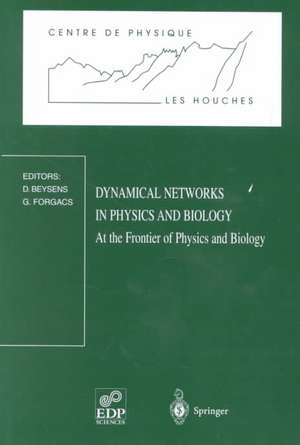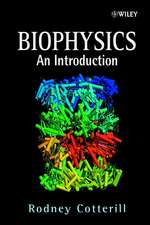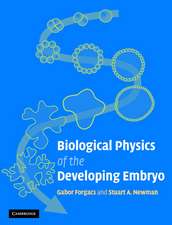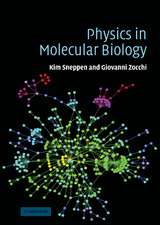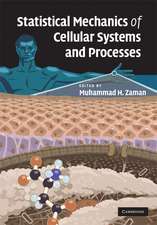Dynamical Networks in Physics and Biology: At the Frontier of Physics and Biology Les Houches Workshop, March 17–21, 1997: Centre de Physique des Houches, cartea 10
Editat de D. Beysens, G. Forgacsen Limba Engleză Paperback – 17 noi 1998
Preț: 642.18 lei
Preț vechi: 755.51 lei
-15% Nou
Puncte Express: 963
Preț estimativ în valută:
122.92€ • 133.56$ • 103.32£
122.92€ • 133.56$ • 103.32£
Carte tipărită la comandă
Livrare economică 21 aprilie-05 mai
Preluare comenzi: 021 569.72.76
Specificații
ISBN-13: 9783540653493
ISBN-10: 354065349X
Pagini: 332
Ilustrații: XVI, 315 p. 134 illus.
Dimensiuni: 155 x 235 x 22 mm
Greutate: 0.47 kg
Ediția:1998
Editura: Springer Berlin, Heidelberg
Colecția Springer
Seria Centre de Physique des Houches
Locul publicării:Berlin, Heidelberg, Germany
ISBN-10: 354065349X
Pagini: 332
Ilustrații: XVI, 315 p. 134 illus.
Dimensiuni: 155 x 235 x 22 mm
Greutate: 0.47 kg
Ediția:1998
Editura: Springer Berlin, Heidelberg
Colecția Springer
Seria Centre de Physique des Houches
Locul publicării:Berlin, Heidelberg, Germany
Public țintă
ResearchCuprins
Lecture 1 Cooperative Phenomena in Physical Networks.- Networks of Biopolymers.- Lecture 2 Complex Networks in Cell Biology.- Lecture 3 The Keratocyte Cytoskeleton: A Dynamic Structural Network.- Lecture 4 Adhesion Mediated Signaling: The Role of Junctional Plaque Proteins in the Regulation of Tumorigenesis.- Lecture 5 Of Proteins, Redox States and Living Things.- Lecture 6 Tensegrity and the Emergence of a Cellular Biophysics.- Lecture 7 The Leukocyte Actin Cytoskeleton.- Lecture 8 Branched Polymers and Gels.- Lecture 9 Statistical Mechanisms of Semiflexible Polymers: Theory and Experiment.- Lecture 10 Scale Effects, Anisotropy and Non-Linearity of Tensegrity Structures: Applications to Cell Mechanical Behavior.- Cellular and Extracellular Networks.- Lecture 11 Networks of Extracellular Matrix and Adhesion Proteins.- Lecture 12 Networks of Extracellular Fibers and the Generation of Morphogenetic Forces.- Lecture 13 First Steps Towards a Comprehensive Model of Tissues, or: A Physicist Looks at Development.- Lecture 14 Networks of Droplets Induced by Coalescence: Application to Cell Sorting.- Lecture 15 A Monte-Carlo Approach to Growing Solid Non-Vascular Tumors.- Genetic, Immune, Molecular and Metabolic Networks.- Lecture 16 Intracellular Communication via Protein Kinase Networks.- Lecture 17 Molecular Networks that Regulate Development.- Lecture 18 H-Bond Networks in Stability and Function of Biological Macromolecules.- Lecture 19 A Network of Cell Interactions Mediated by Frizzled is Essential for Gastrulation and Anteroposterior Axis Determination in Xenopus Embryos.- Lecture 20 Fluid Lipid-Bilayer Membranes: Some Basic Physical Mechanisms for Lateral Self-Organization.- Lecture 21 Logical Analysis of Timing-Dependent Signaling Properties in the Immune System.- Lecture 22 A Water Channel Network in Cell Membranes of the Filter Chamber of Homopteran Insects.- Lecture 23 Creative Genomic Webs.- Neuronal Networks.- Lecture 24 Hebbian Learning of Temporal Correlations: Sound Localization in the Barn Owl Auditory System.- Application of Physical Models and Phenomena to Biological Systems.- Lecture 25 Structures of Supercoiled DNA and their Biological Implications.
